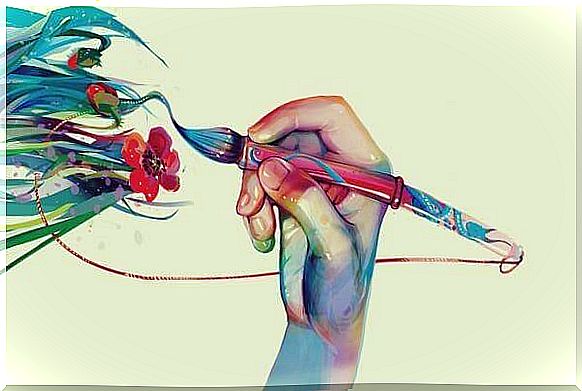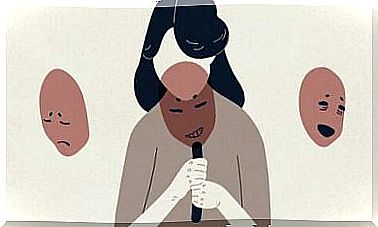4 Techniques For Emotion Regulation

All feelings arise for a reason, and it is never a good idea to systematically hold them back or repress them. Nor should we let them take the wheel without having any control over our behavior. And there are emotion regulation techniques that make us wiser in this area.
One of the most difficult emotions to deal with is courage because it is a great source of energy. There are also many people around the world who let their anger guide them and thereby say or do something that hurts them or others. In the same way, fear sometimes takes control, setting us limits that limit our growth or quality of life.
This is why it is so important to know techniques to regulate your feelings. These are simple methods that allow us to manipulate what we feel so that we can strike a balance between holding back and expressing our feelings.
In the following we would like to introduce four techniques for regulating emotions.
“He who conquers others is strong; he who conquers himself is powerful. “
Lao Tse
Emotional Regulation Techniques
1. Vipassana
Vipassana is a very ancient meditation technique based on introspection. Vipassana means “to see things as they are”. For the cultures of India this is synonymous with the opportunity to develop the “art of living”. Essentially, this technique consists in devoting time to self-image. One should look at oneself from the outside.
To do this, we should go to a quiet place, close our eyes, take a deep breath and concentrate on our breathing. We should become aware of how the air gets into our body and then leaves it again. The next step is to check each of the areas of the body to see how it feels when we go through it in the mind. The best thing to do is to do this for a few minutes each day. This is an exercise that helps us develop self-control.

2. Virtual environments
Another technique for regulating emotions is the use of virtual or imaginary environments. This means that we should expose ourselves to various simulated situations in which we feel particularly vulnerable. The second step is to evaluate them, both the situations themselves and our feelings. Nowadays there are psychologists and institutes who have the technology to digitally reproduce certain situations. However, this is not the only option.
If you don’t have access to the necessary technology, then there is nothing better than our imagination. We can draw in our imagination or describe in words any of these situations in which we feel a sense of loss of control. The idea behind this is to find out which stimuli or moments make us feel like we are standing next to us. We should then try to understand this emotion, its raison d’etre, and what it replaces or diminishes.
3. Art therapy
Art therapy is much more than just a fad or one of many trends. In truth, it has been around forever, but only recently has it been recognized for what it is: a valuable tool. This form of therapy is about drawing on various forms of art to express feelings and achieve greater emotional balance. It also helps to resolve mental conflicts and give them new meanings.
It is one of the most effective emotion regulation techniques because it invites us to express our emotions through creative language. That alone is a step in the right direction. Feelings can be thought through and questioned when expressed in words, painting, craftsmanship, or any other form of art. When we regularly use art as therapy, it nourishes our self-control.

4. Self-assessment
Little control over one’s emotions often results from a lack of self-awareness and low self-esteem. We are tense because we ask too much of ourselves or because we punish ourselves for our mistakes instead of focusing on what we did right. This tension makes us sensitive to certain aspects, such as criticism, differences or demands.
A good idea is a thorough weekly or monthly self-assessment. In this case, the point is not to determine where we failed in the last week or in the last month, quite the contrary. The goal is to locate our achievements, what we should congratulate ourselves on. This simple exercise will help us reconcile with ourselves, and it will make us smarter as it is how we regulate our emotions.

Emotion regulation techniques are not a secret recipe. The mere fact of implementing them is already causing visible changes. As we learn to deal with our feelings, it gives us the opportunity to lead a more relaxed life.









